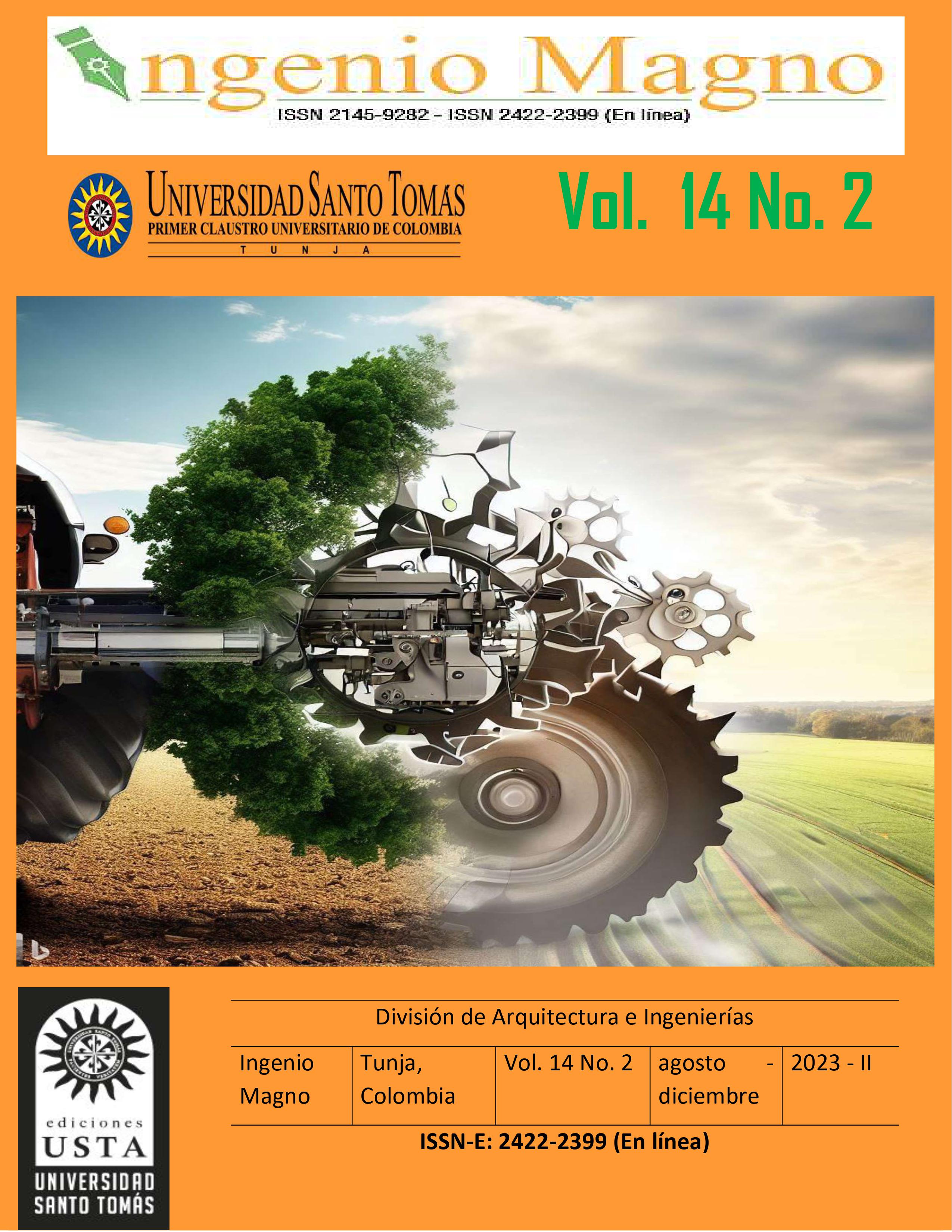Formulación de una idea de negocio sostenible para la producción de humus orgánico como fertilizante para cultivos de hortalizas en el municipio de Tuta -Boyacá. https://doi.org/10.15332/24222399.2946
##plugins.themes.bootstrap3.article.main##
Resumo
Downloads
##plugins.themes.bootstrap3.article.details##
DECLARACIÓN DE ORIGINALIDAD DE ARTÍCULO PRESENTADO
Por medio del presente documento, certifico(amos) que el artículo que se presenta para posible publicación en la revista institucional INGENIO MAGNO del Centro de Investigaciones de Ingeniería Alberto Magno CIIAM de la Universidad Santo Tomás, seccional Tunja, es de mi (nuestra) entera autoría, siendo su contenido producto de mi (nuestra) directa contribución intelectual y aporte al conocimiento.
Todos los datos y referencias a publicaciones hechas están debidamente identificados con su respectiva nota bibliográfica y en las citas que se destacan como tal. De requerir alguna clase de ajuste o corrección, comunicaré(emos) de tal procedimiento con antelación a los responsables de la revista.
Por lo anteriormente expresado, declaro(amos) que el material presentado en su totalidad se encuentra conforme a la legislación aplicable en materia de propiedad intelectual e industrial de ser el caso, y por lo tanto, me(nos) hago (hacemos) absolutamente responsable(s) de cualquier reclamación relacionada a esta.
En caso que el artículo presentado sea publicado, manifiesto(amos) que cedo(emos) plenamente a la Universidad Santo Tomás, seccional Tunja, los derechos de reproducción del mismo.
Referências
2. Barro, R. J., & Martin, X. S. (2018). Crecimiento económico. Reverté.
3. Castellanos, P. M., Encinas, A. H., Dios, A. Q., & Ortegón, A. C. (2020). Analysis of environmental sustainability educational approaches in engineering education. In 2020 15th Iberian Conference on Information Systems and Technologies (CISTI). (pp. 1-5). IEEE.
4. Chapman, A. (2004). Análisis DOFA y análisis PEST. Accesible en: http://www. degerencia. com/articulos. php.
5. EOT. (2021). Esquema de Ordenamiento Territorial Tuta Boyacá.
6. Gamez, M. J., & Gil, M. G. (Marzo de 2023). Desarrollo Sostenible. Obtenido de https://www.un.org/sustainabledevelopment/es/
7. Genia bioenergy. (2020). Daño medioambientales de una mala gestión de los residuos orgánicos. Genia Bioenergy. https://geniabioenergy.com/dano-medioambientales-d e-una-mala-gestion-de-los-residuos-organicos/.
8. Granja Verde del Valle. (2021). Humus de lombriz ¿Cuáles son sus beneficios? Granja Verde del Valle. http://granjaverdedelvalle.com.co/humus-de-lombriz- cuales-son-sus-beneficios.
9. Ministerio de Ambiente y Desarrollo Sostenible. (2023). icono Plan Nacional de Negocios Verdes. Ministerio de Ambiente y Desarrollo Sostenible. https://www.minambiente.gov.co/negocios-verdes/pla n-nacional-de-negocios-verdes/.
10. Muñoz, A. L., Vega, C. A., & Martínez, J. C. (2017). Redes de conocimiento como estrategia de transferencia de tecnología para la adaptación al cambio climático. Ingenio Magno, 8(2), 10-20.
11. NACIONES UNIDAS. (1087). Informe de la Comisión Mundial sobre el Medio Ambiente y el Desarrollo. Asamblea General l-t\b \~. Retrieved March 1, 2023, from https://www.ecominga.uqam.ca/PDF/BIBLIOGRAP HIE/GUIDE_LECTURE_1/CMMAD-Informe-Comi sion-Brundtland-sobre-Medio-Ambiente.
12. Rico, V. (2005). Estudio de mercado. Obtenido de Estudios de mercado Org: https://www. estudiosdemercado. org/que_es_un_estudio_de_mercado. html.
13. Salinas, F., Sepúlveda, L., & Sepúlveda, G. (Mayo de 2014). Evaluación de la calidad química del humus de lombriz roja californiana (Eiseniafoetida) elaborado a partir de cuatro sustratos orgánicos en Arica.
14. Torres Payoma, F., Vega Velásquez , B., Ramírez Alvarado , R., Hernández Aldana, F., & García Guarín , J. (2022). Diseño y validación de una clasificadora mecánica para residuos orgánicos municipales. Ingenio Magno, 13(1), 113 - 124. Recuperado a partir de http://revistas.ustatunja.edu.co/index.php/ingeniomagno/article/view/2576
15. Yan, J., Huang, W., & Pan, X. (2023). Initial Studies on the Effect of the Rice–Duck–Crayfish Ecological.
16. Zhang, X., Niel, L., & Gao, H. (2023). Applying second derivative synchronous fluorescence spectroscopy combined with Gaussian band fitting to trace variations of DOM fractions along an urban river. Ecological Indicators, 146. Scopus.

